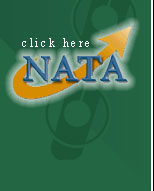|
PRACTICAL
SIGNIFICANCE
This
study
demonstrated
that
combining
oral and
intravenous
rehydration
facilitates
recovery
from
exercise
dehydration
compared
to
single
modes of
rehydration.
When
intravenous
fluid is
necessary,
the
addition
of
simultaneous
oral
rehydration
accentuates
recovery.
STUDY
BACKGROUND
Dehydration
as a
result
of
exercise
participation
is
common
in
athletics.
Previous
investigations
have
compared
intravenous
(IV) and
oral
fluid
replacement
during a
brief
period.
Surprisingly,
minimal
significant
differences
are
identified
between
rehydration
methods.
None of
these
studies
included
a trial
where
subjects
consumed
fluids
ad
libitum
(AL), or
a
combination
of IV
and oral
(IV+OR)
fluid
rehydration.
Furthermore,
no
previous
studies
focused
on
recovery
following
exercise
dehydration
(EXDE).
OBJECTIVE
To
determine
differences
in
thermoregulatory
and
stress
recovery
from
exercise
dehydration
comparing
no fluid
(NF),
AL, OR,
IV, and
IV+OR
rehydration
modes.
DESIGN
AND
SETTING
A
repeated
measures
design
was used
to
compare
five
treatment
groups
(rehydration
mode)
across
time
intervals
(pre, 5
min, 15
min, 30
min, 45
min, 60
min).
This
study
took
place in
the
Human
Performance
Laboratory
at the
University
of
Connecticut.
SUBJECTS
Twelve
physically
active
subjects
(23 ± 4
yrs,
81.3 ±
3.7 kg,
180 ± 6
cm, 56.9
± 4.4
mL·min-1·kg-1
VO2max,
7.9 ± 3
% body
fat)
voluntarily
participated
in five
randomly
ordered
experiments.
MEASUREMENTS
Body
mass,
rectal
temperature,
4-site
mean
weighted
skin
temperature,
sweat
rate,
plasma
cortisol
concentration
[CORT],
thermal
sensation
and
Environmental
Symptoms
Questionnaire
(ESQ)
score.
RESULTS
Subjects
were
hypohydrated
(-4.23%
body
mass)
post-EXDE
and were
REHY to
-2.13 ±
0.47%
for all
but NF
and AL
trials.
Subjects
partially
REHY
during
AL,
returning
to only
-2.13 ±
1.3%
body
mass. NF
rectal
temperature
was
significantly
greater
than IV
(p=.023)
at
REHY30,
and
significantly
greater
than OR,
IV, and
IV+OR
(p>.009),
but not
AL
(p=.068)
at
REHY60.
Mean
weighted
skin
temperature
during
AL was
significantly
less
than
IV+OR at
REHY5 (p
= .019).
Sweat
rate
throughout
REHY and
seated
recovery
did not
differ
between
REHY
mode and
averaged
0.96 ±
0.18
L.hr-1
(p=.699).
AL
demonstrated
increased
plasma
[CORT]
compared
to IV+OR,
independent
of time
(p=.015).
Thermal
sensation
showed a
significant
decrease
over
time
(p<.05),
without
a
significant
between
trial
difference
(p=.324).
NF ESQ
score
was
significantly
greater
than
IV+OR at
REHY60
(p=.012),
but no
other
significant
differences
existed.
CONCLUSIONS
IV and
combined
IV+OR
REHY
offered
some
short-term
thermoregulatory
advantages
over NF
and AL
REHY,
beyond
those of
OR REHY.
These
benefits
were
equivocal
after
30-min
of
recovery.
IV+OR
attenuated
environmental
symptoms
more
effectively
than
other
REHY
modes.
Combining
IV+OR
REHY
stimulates
multiple
mechanisms
of
thermoregulatory
and
stress
recovery
following
EXDE.
|
Publication
&
Presentation
List:
-
McDermott BP, Casa DJ, Beasley KN, Emmanuel H, Lee EC, Yamamoto LM, Anderson JM, Pescatello LS, Armstrong LE, Maresh CM. Comparison of ad libitum, oral, intravenous, and combination rehydration: thermo-regulatory function and perception following exercise dehydration. 2010 NATA Annual Meeting, Philadelphia, PA.
|
|
|
|

Brendon P. McDermott
D.J. Casa
K.N. Beasley
H. Emmanuel
E.C. Lee
L.M.Yamamoto
J.M. Anderson
L.S. Pescatello
L.E. Armstrong
C.M. Maresh
Principal Investigators
|
Brendon P. McDermott, PhD, ATC
Assistant Professor/Clinical Coordinator
Graduate Athletic Training Education Program
University of Arkansas
155 Stadium Drive, HPER 326B
Fayetteville, AR 72701
479-575-4670
brendonm@uark.edu Brendon McDermott is currently assistant professor and clinical coordinator in the Graduate Athletic Training Education Program at the University of Arkansas. He received his Bachelor of Science degree in Athletic Training from Northeastern University and his Master’s degree in Kinesiology from Indiana University. McDermott then worked for four years at King’s College in Wilkes- Barre, PA as an assistant clinical professor and assistant athletic trainer. He then completed his doctorate at the University of Connecticut studying exercise science with a research focus on thermal physiology, hydration, and exertional heat stroke. McDermott has been an assistant professor at the University of Tennessee at Chattanooga is also on the medical and science advisory board of the Korey Stringer Institute. |
|
|
This
Grant
Information
Summary
may be
downloaded
in a
2-page
pdf file
from
http://www.natafoundation.org/wp-content/uploads/2012/10/McDermottBrendon.pdf |
Back to
April 4, 2013
eBlast
Newsletter
Send e-mail
to rachaelo@nata.org with questions
or
comments
about this web site. |


